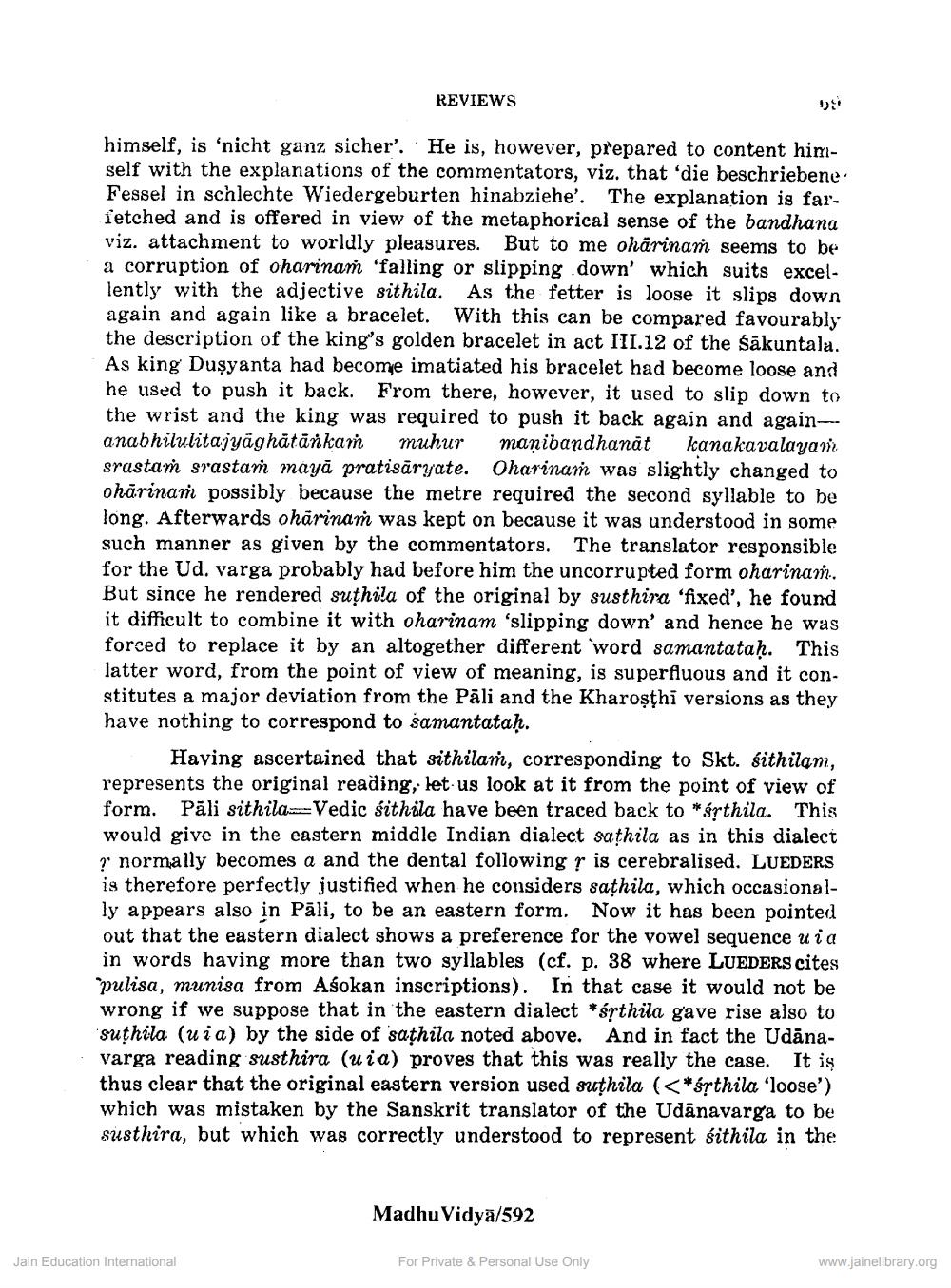________________
REVIEWS
himself, is 'nicht ganz sicher'. He is, however, prepared to content himself with the explanations of the commentators, viz. that 'die beschriebene Fessel in schlechte Wiedergeburten hinabziehe'. The explanation is farfetched and is offered in view of the metaphorical sense of the bandhana viz. attachment to worldly pleasures. But to me ohärinam seems to be a corruption of oharinam falling or slipping down' which suits excellently with the adjective sithila. As the fetter is loose it slips down again and again like a bracelet. With this can be compared favourably the description of the king's golden bracelet in act III.12 of the Sakuntala. As king Dusyanta had become imatiated his bracelet had become loose and he used to push it back. From there, however, it used to slip down to the wrist and the king was required to push it back again and againanabhilulitajyä hätänka manibandhanat kanakavalayan srastam srastam maya pratisäryate. Oharinam was slightly changed to ohärinam possibly because the metre required the second syllable to be long. Afterwards oharinam was kept on because it was understood in some such manner as given by the commentators. The translator responsible for the Ud. varga probably had before him the uncorrupted form oharinash. But since he rendered suthila of the original by susthira 'fixed', he found it difficult to combine it with oharinam 'slipping down' and hence he was forced to replace it by an altogether different word samantataḥ. This latter word, from the point of view of meaning, is superfluous and it constitutes a major deviation from the Påli and the Kharosthi versions as they have nothing to correspond to samantataḥ.
muhur
Jain Education International
Having ascertained that sithilam, corresponding to Skt. sithilam, represents the original reading, let us look at it from the point of view of form. Păli sithila Vedic sithila have been traced back to "arthila. This would give in the eastern middle Indian dialect sathila as in this dialect normally becomes a and the dental following r is cerebralised. LUEDERS is therefore perfectly justified when he considers sathila, which occasionally appears also in Pali, to be an eastern form. Now it has been pointed out that the eastern dialect shows a preference for the vowel sequence ui a in words having more than two syllables (cf. p. 38 where LUEDERS cites pulisa, munisa from Asokan inscriptions). In that case it would not be wrong if we suppose that in the eastern dialect *érthila gave rise also to suthila (uia) by the side of sathila noted above. And in fact the Udanavarga reading susthira (uia) proves that this was really the case. It is thus clear that the original eastern version used suthila (<*rthila 'loose') which was mistaken by the Sanskrit translator of the Udänavarga to be susthira, but which was correctly understood to represent sithila in the
را
Madhu Vidya/592
For Private & Personal Use Only
www.jainelibrary.org




